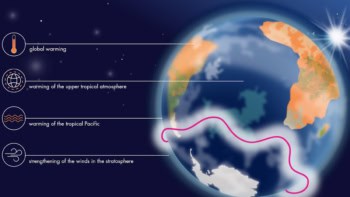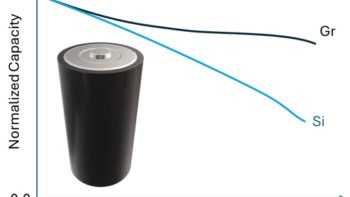A controversial theory proposing that cosmic rays are responsible for global warming is to be put to the test at CERN, the European laboratory for particle physics. Put forward two years ago by two Danish scientists, Henrik Svensmark and Eigil Friis-Christensen, the theory suggests that it is changes in the Sun's magnetic field, and not the emission of greenhouse gases, that has led to recent rises in global temperatures.
Experimentalists at CERN will use a cloud chamber to mimic the Earth’s atmosphere in order to try and determine whether cloud formation is influenced by solar activity. According to the Danish theory, charged particles from the Sun deflect galactic cosmic rays (streams of high-energy particles from outer space) that would otherwise have ionized the Earth’s lower atmosphere and formed clouds.
The theory is supported by findings presented by Svensmark, of the Danish Space Research Institute, in a paper published in the 23 November edition of Physical Review Letters. Svensmark found long-term correlations between cosmic rays and the Earth’s temperature, concluding that cosmic radiation fluctuations were related to cloud cover. “Clouds are important to the Earth’s energy balance, ” says Svensmark, “but there are still many aspects of the relationships that need clarification. If the sun does influence our climate as we believe, it means that processes originating in the formation of the Milky Way affect the climate.”
Jasper Kirkby, who will lead the CERN project, believes Svensmark is right. He points out that there was a mini ice age in northern Europe at the end of the 17th century that was not caused by humans but that perfectly matched changes in the Sun’s activity. “The theory will probably be able to account for somewhere between a half and the whole of the increase in the Earth’s temperature that we have seen in the last century, ” says Kirkby. “But we have yet to prove the relationship between the Sun’s cosmic radiation and the formation of clouds.” He points out that global warming may be part of a natural cycle in the Earth’s temperature.
Bent Sørensen, an environmental physicist at Roskilde University Centre in Denmark, believes Svensmark’s paper lacks real evidence. “It’s an interesting proposal for research, which is why CERN will try to acquire the knowledge that is lacking, ” says Sørensen, “but I feel there’s a large gap between finding statistical correlations with some assumptions and having a causal correlation or even a physical correlation.”
Sørensen says that Svensmark and Friis-Christensen have done themselves no favours by denouncing the greenhouse theory: “I think it’s very unfortunate that the authors said right from the beginning that they didn’t believe in the greenhouse theory, which is a proper physical theory with a concrete mechanism. Instead their theory is still speculative. I’m not saying there isn’t anything in it, it just has a different status to the theories behind the greenhouse effect.”



